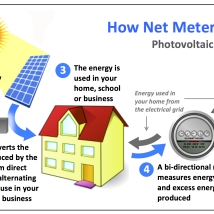
Malaviya National Institute of Technology Jaipur

Challenges for distributed energy storage
Power systems around the world are transitioning from fossil fuels to renewable energy sources, such as wind and photovoltaic (PV), increasing from 181.57 GW of worldwide installed capacity in 2009 to 549.24 GW in 2014 and generating 2.7 % of the electrical energy consumed globally. By 2050, wind power and PV are estimated to provide more than half of the electricity demand in China and more than 40% of the electricity demand in the U.S. But these statistics do not unveil the entire story. The enormous growth of variable renewable energy (VRE) like solar power results in a real-time imbalance between the energy consumed and produced . Due to integration of these VRE, intermittency and uncertainty of energy sources have been increased. In countries where electrical energy is traded in a competitive market, the intermittency and variability of renewable energy sources will also increase the volatility of electricity prices. Energy storage systems are an essential enabling technology that allows the increasing integration of renewable resources into the electric power system. Energy storage systems can also be used to improve grid resiliency and reliability by distribution system operators. Energy storage systems will play an important role in residential and small commercial areas where pricing policy is dynamic. Electric customers can use storage systems in a strategic way to manage their energy use in new and profitable ways. Consumers can avoid paying high rates by storing energy during low-price off-peak periods and releasing that energy when the price is high.
The growth of distributed energy resources (DER) is changing the way electricity is delivered by the grid to end users. Distributed solar PV has evolved to become a valuable part of the global power generation mix and is forecast to grow substantially in the next several years as feed-in tariff and subsidy is provided by the government. In spite of an increase in the demands for distributed energy resources and storage, their development has been hindered due to following reasons:
The higher cost of purchasing and technical limitations of storage facilities.
many countries, utility pays little or no compensation for electrical energy that consumers
inject back into the power grid. This lack of compensation provides little incentive for DES
to react to variations in electricity prices .
Residential consumers have lack of knowledge about the smart control and communication
systems that enable energy storage to optimally self-schedule based on price forecasts
consumer’s demand and available supply.

Fig 1 .
To evade these issues, centralized management approach, cloud energy storage can be used to better utilize DES and DER resources. CES with can provide the same services as DES at lower cost by sharing storage resources and taking advantage of the economies of scale. There is also some policies like net metering may be employed on selling price of electricity back into the grid and some revenue can be obtained by the DES consumers. Sonnenbatterie, a Germany based company, aims at providing an energy storage solution to residential users, including software and energy storage units . SENEC.IES utilizes DES to provide users a lower electricity price . Some other companies aggregate users’ DES to participate ancillary services market .
- Sonnenbatterie, Germany.https://sonnen-batterie.com/en-us/start
- Green Charge Networks, US.http://www.greencharge.net/
- Net metering
JANUARY 29, 2018 NIDHINAGILL